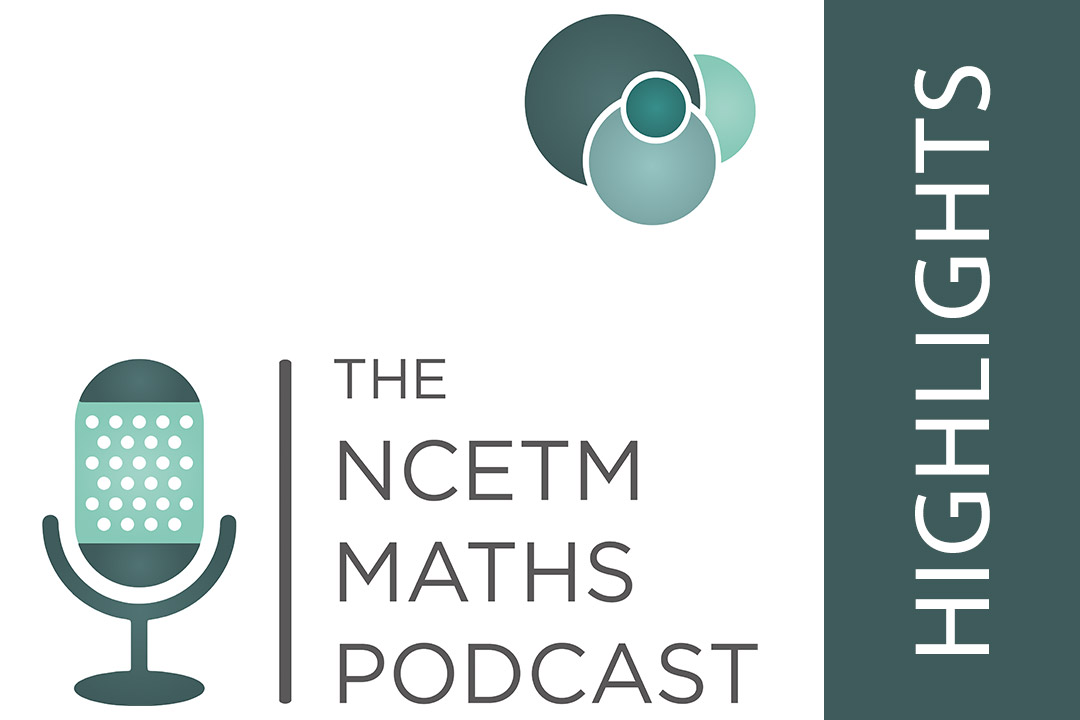Teaching maths in the pandemic
How our podcast guests have been adapting their teaching to get round Covid restrictions
26/11/2020

How has your teaching changed during the pandemic? Even though schools have remained open while most other areas of life have been in some way restricted, life in classrooms has been far from normal.
Maintaining physical distance, controlling the touching and sharing of books and resources, and keeping teaching going for pupils who have to stay at home: most teachers are having to take these factors into account when they plan and teach. In our podcast series Teaching through the pandemic, we’ve spoken to a variety of teachers about how they’re getting round these obstacles. Here are three examples.
Half the class in. Half at home
At sixth form teacher Simon Ball’s college in Manchester, the decision was taken to reduce numbers on site by keeping half of every year group at home at any one time. So, in all of Simon’s maths lessons, half the class are in front of him and the other half are listening in at home.
But he’s made it work by using the screen-share function of a video-conferencing tool (Microsoft Teams) to enable the students at home to ‘join’ the lesson. The other key tool he uses is a visualiser linked to his computer, so the students at home see what he’s writing at the same time as those in the room. And these are his ground rules for a successful lesson:
- Students in the room keep very quiet
- Students at home keep microphones off unless prompted
- Extensive use of the chat and ‘hand -up’ function for students to ask questions
- Be prepared to repeat things more than usual
‘If I am proficient, it’s because Ii just jumped in at the deep end,’ says Simon. ‘And there was no other choice.’
One unexpected positive that came with the video-conferencing was that it encouraged students who’d otherwise been quiet in class to ask more questions, as Simon explains in the podcast:
Listen to Simon’s whole podcast discussion
Real-time assessment without looking over shoulders
At Gemma Scott’s 11-18 comprehensive in Yorkshire, teachers have to stay in taped-out areas at the front of the class, so the maths department, which Gemma leads, has introduced a refined system of getting instant feedback from multiple choice questions.
The questions are used in lessons to provide teachers with the sort of view of students’ understanding that, in normal conditions, they’d get by looking over shoulders or taking books in to mark.
Students pick one of four answers to the questions either by using cards, holding up fingers or by writing on mini-whiteboards.
But an added benefit is that it has allowed Gemma to do some CPD with teachers around careful choice of multiple choice questions, so that every answer reveals something about the student who chooses it. In the podcast she described her ideal multiple choice question:
Listen to Gemma’s whole podcast discussion
More movement in maths lessons
One of the objectives of Nikki Bailey, Year 1 teacher and Deputy-Head at a primary school in Chester, is to get children moving around more and using their hands to touch things in maths lessons. So, activities that could easily be done at a desk or sitting at a table, are often done in the playground, in the hall or just moving around the classroom. For example, where the activity is to find matching pairs of cards, the cards might be initially spread around the hall or the playground, so children have to move around to look for them and bring them back somewhere when they find a pair. Another activity, on fractions, with Year 5, started with half the class standing inside the classroom, and the other half outside the door in the playground.
Nikki has found that mixing physical activity with mathematical thought, or active learning as she calls it, every now and then helps children concentrate for longer. In her podcast discussion she encouraged any primary teachers to give it a go:
<p>If you know of, or are using, any new approaches to get round Covid restrictions, please let us know by emailing us.</p>
Email us